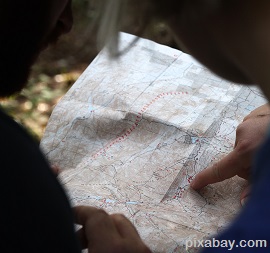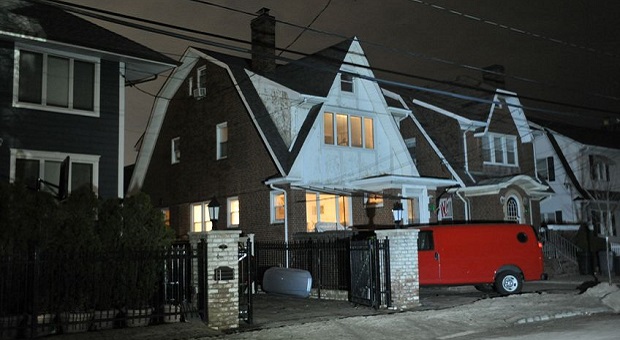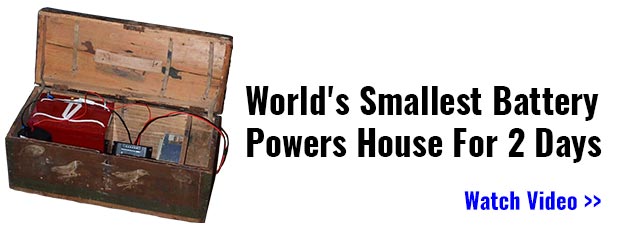As you look around, you are aware that electricity and electronic devices have made permanent changes in how we all live. It is one thing to say you can do without electricity, and then actually be able to achieve that goal.
In fact, many people that lose access to electricity for one reason or another either wind up extremely sick or dead in a matter of weeks. No matter whether they are unable to refrigerate foods or keep the house warm, surviving without electricity may not be as easy as it looks.
Since an EMP will disrupt both electrical power distribution and ruin devices that use it, the wise prepper will do everything possible to prepare for an EMP blast.
If you don’t know where to start your EMP preparations, then Survivopedia is the best place to look for answers. Read the following article to find out a few simple things to do to prepare for something that many experts believe will be the main focus of an enemy attack.
Learn about Passive Heating
Since keeping your home warm or cool (depending on the season) tends to cost a lot of energy, this will be one place where you need to focus a good bit of attention. There are a number of “passive” unexpensive methods to keep your home warm or cool, and they can cut your heating bill by as much as 50 – 75% even on regular times.
- Add at least one foot of R-22 insulation to the walls (fiberglass, paper backed insulation is much cheaper than foam based insulation boards). Insulate the attic and under the roof. Insulate floors and add heavy carpets, install carpet hangings on the walls or other decorations that will seal off the rooms.
- Install tight fitting windows that will allow heat from the sun through in the winter. As long as you do not have furniture in the room that will fade in the sunlight, it is fine to choose windows that will let the maximum amount of light and heat in.
- Put plastic over the windows to help keep heat from escaping the room. No matter how new or tight your windows may be, the seals may become brittle and the frames will lose their tight fit as the house settles.
- Install storm doors that will have a tighter fit than regular house doors.
- Rebuild door frames, hinge areas, and window areas so that they do not allow air in or out, and keep a good supply of newspaper on hand to place in doors to help prevent cold air from getting in.
- Do not cover over house ventilation zones when insulating. No matter how much you may want to save on heating bills, it will do you no good if mold, fungi, and mildew build up in the walls because there is not enough air circulating.
- Make sure the roof and shingles are in good repair. Always remember that heat rises, therefore the roof will always be prime escape point for heat that you may be trying to conserve. If you routinely close off the attic or other upstairs floors, then feel free to put plastic down on the floors in order to form a heat barrier.
- Choose and practice living in one room that has been properly weather proofed, and maintain a reasonable temperature with very few, if any heat resources.
- Don’t forget that candles, kerosene stoves, wood stoves, propane stoves and others all consume oxygen. Don’t create a completely airtight seal in the room because carbon monoxide and carbon dioxide levels can build up to lethal levels very quickly.
- Use black and white to your advantage: black and dark colors absorb radiant energy while white and light colors reflect it. Carpets, furniture drapes, and many other internal objects can become heat retainers or reflectors if you pay attention to this one small factor alone.
- Keep a large aquarium in the room. As strange as it sounds, water is one of the best insulators on Earth. It absorbs heat well and can also help keep a warmer, less dry temperature in any room that features an aquarium.
Passive heating and cooling methods can give you approximately 20 degrees worth of stabilization and also substantially cut your power bills at the same time. Just be sure to use good quality materials and do what you can to get the best prices on installation and labor.
Where Do You Get Your Food From?
Stockpiling food will not do much beyond helping you get past a short term crisis. Unless you have a year’s worth of food stored away and already eat enough to ensure fresh rotation, it is not likely that stockpiling will be a viable answer. And if you stockpile and others find out, they come to your home and try to take your food.
There are two ways that you can go about stockpiling. First, you can take a minimalist approach and only store 2-3 weeks’ worth of food. As long as you have a viable means of producing food, don’t take a chance of getting hit by looters or anyone else that might want to steal from you.
Second, the easiest if not most effective way to prepare for an EMP based food shortage may well be to store away large quantities of food for one year survival. Start off by purchasing airtight bins that will hold at least 30 gallons, and fill one bin with enough food to last for one month. The bin should include:
- Foods that will last for one year or more (dried and canned foods will work much better than frozen foods or ones that do not have a very long shelf life).
- Foods that are nutritionally balanced. Check serving amounts and make sure that you also meet your daily caloric needs.
- Printed instructions for how to prepare each food.
To find out if your bin system will work, see if you can make it one month by eating only the foods in the bin and cooking only with resources that you will be using after an EMP has occurred.

Do not forget that some factors (such as radiation exposure, damage to the packages, and looting) can deprive you of your stores. You must also have some kind of plan in place for what you will do when your stored food supplies run out.
As time passes, you’ll find harder to obtain food in rural areas, especially as survivors move from the cities and over hunt, over fish, and over tax the soil. Excess harvesting will also take a toll on wild plants.
Overall, as a beginner, you may actually be better served by focusing on intensive container gardening. Not only will you be able to triple or quadruple normal production amounts, container gardening also forms an excellent basis for setting up a hydroponics system. You can also grow container gardens in just about any location, including inner city apartments and other areas where land and other resources may not be available.
How to Cook without Electricity
Propane stoves can be expensive, and eventually you will run out of fuel, but there are still a number of alternatives you can use to cook meals:
- A candle heater using flower pots. They can be used for cooking and for heating a room.
- A solar cooker that can be used outdoors or indoors
- A passive solar heater using tin cans, glass, and a wooden frame, and it can act as a heating source for one room or many depending on how you arrange the pipes.
If you have a bit of land around you or a wooded area, there are devices that you can use to help with cooking outdoors:
- A tin can rocket stove – It’s fairly easy device to build from tin cans. It can be used to burn wood, or even used with candles. The rocket stove is usually used in outdoor settings, however you may use it indoors if you have sufficient ventilation.
- A cinder block stove – You can create a reasonably durable and reliable stove using just four cinder blocks. This is ideal for cooking outdoors since it provides a decent working surface.
- Start a compost pile near your home – Compost piles generate a good bit of heat, it only takes a few coils of non-flammable piping to transport that heat indoors. If you circulate water through the pipes, add water carrying radiators in each room to disperse the heat.
- Underground stoves – These can be as simple as pits dug into the ground, or they can integrate tin can rocket stoves into the design. If you have enough wood or other materials, these stoves are easy to build and may be more efficient than above ground camp fires.

If you live in a city, then you have seen homeless people and are aware of the methods they use to keep warm and cook any food they may find. Burn barrels or any other resource that may be set up by others in your neighborhood. Take the time now to get to know your neighbors so that in a crisis, you have the chance of moving among them safely.
Refrigeration and Keeping Cool
In time of need, you are sure to realize that any ice in your freezer will melt, and then you will not be able to make more using conventional means. If you have a solar cooker, you can make ice during the dark, or night time hours.
For the sake of simplicity, you can start off with a cardboard solar cooker, which can also be used for refrigeration during the night hours. In a survival situation, you will still need to switch to ice or some other method during the day hours.
There are some other simple things you can do to keep foods and medicines cool:
- Bury foods in the earth
- Use a zeer pot, which is basically 2 clay pots separated by wet sand. As the water evaporates, it will remove heat from the center of the pot.
- Add table salt to ice in your freezer or a sealed container.
- Consider refrigerators and freezers that run on propane or other alternative fuels
How to Obtain Purified Water
No matter whether you are accustomed to filtered water from the tap or rely on bottled water, there is bound to be a shortage of clean water after an EMP blast. You need a reliable plan for obtaining, conserving, and purifying water. If you are stuck in the city, it take much more time before you can get into a location where water be more available.
Here’s what you can do now for a better water management and also prepare for an EMP:
- Find out how much water you are using each day.
- Make note of the flow rate on all shower heads and faucets.
- Replace shower heads with more water efficient options.
- Place at least one ½ gallon jug in the toilet filled with water, to reduce the amount of water being used.
- Look at all pipes, and any other places where the water you pay for may be leaking
Once you have learned to conserve water, you will turn your attention to storage and collection. There are five basic ways to obtain water during an EMP crisis:
- Capture precipitation such as rain or snow in a bucket.
- If you have access to the outdoors, learn how to collect water vapor that rises from the soil.
- Pull water from the air by using table salt or other desiccants
- If you have access to a well, install a hand pump to draw water from it.
- Obtain water from a nearby pond or other source of water, and you can use an Archimedes Screw or a ram pump to draw the water
If you have to survive an EMP caused by a nuclear event, any water that you collect may not be suitable to drink even after you purify it using bleach, tablets, or some other form of chemical filtration.
The simplest way to cover all your basis in an EMP (get rid of bacteria, chemicals, and all radioactive substances except Tritium) is to distill the water. It requires heating it up to a point where it turns to steam, and then collecting the water droplets in a clean container.
Aside from using a still that require vast amounts of wood, propane, or some other fuel, you can also use a solar cooker with a plastic tent on it. If you do some experiments with plastic bottles, you’ll see how to use natural sunlight to make water evaporate faster, and then collect the clean water in a chamber away from the main heating area.
What About Your Car?
After an EMP blast occurs, you are likely to find it impossible to make use of motorbikes, cars, and other motorized vehicles. Even if they are not destroyed by the EMP, you will not be able to use them on the main roads until all of the broken down cars are removed.
And even if you fully prepare your vehicle for an EMP blast, it still may not be capable of moving over the kinds of rough terrain that you might have to navigate in the post EMP world. Use alternative forms of transport that you might want to consider: sled dogs, horses, other animals used for transport, or a rugged bike that can go over rough. A rickshaw might also be of some help.
For short distance or extreme emergency transport, skateboards and skates may be of some help. While they may seem slow, there is no question they will get you further and faster than running.

You may not think much about mobility aides unless you are disabled.
On the other hand, as the crisis unfolds, any number of problems can rob you of your mobility: injury from buildings falling apart as fires erupt as well as injuries sustained in altercations with rioters and looters.
If you choose one mobility aide, the most versatile aide is the rollating walker, which can be used just like a regular walker, or you can push the seat down and use it as a wheelchair. Even though the wheeled part is best used indoors and on smooth surfaces, it can help you get around your home in time of need.
For individuals looking for a lower budget option, a shepherd’s staff might be of some help. It can be as easily used indoors as it can rough terrain. As an added bonus, this type of staff also makes for a powerful weapon if you know how to use it.
Managing Sewage and Waste Disposal
If you live in a rural setting and have an independent leach field, then it is not likely you will need to worry about disruptions in the sewage system. Just keep some sludge removers on hand so that you can put off cleaning out the tank as long as possible.
People living in a city setting will truly have a number of problems with sewage because the municipal systems are likely to overflow and contaminate the streets, water, and just about anything else that the sewage comes into contact with. The simplest thing you can do is keep a portable composting toilet on hand to use in time of need.
Even if you avoid using municipal sewage, other people may still be dumping all kinds of things down the toilets and sink drains. Overflowing sewers will eventually back up and spew all kinds of noxious materials right into your home.
The only way to stave off this problem is to make sure all of your drains (including the toilet) are set up with shut off valves. As soon as an EMP hits, you will be well served by closing these valves so that sewage cannot get into your home.
As for the waste disposal, more than a few people think they will burn almost all of their garbage and keep their house warm at the same time. This may work for paper and wood, but not for plastics.
Start off by finding out exactly what you throw away each day and break those items into categories. Next, figure out alternative means for disposing of each waste type, or even repurpose it in a survival situation. If you have access to land, keep a few compost bins, and use it to grow houseplants that can be consumed for food or medicinal needs.
Personal Safety
If you have been following the news about terrorist attacks in Paris, then you may also be thinking a bit more about how you will manage personal safety.
Many people rely on guns for personal safety, while newer technologies are beginning to overshadow conventional guns. Considering that EMP would turn the world into a stage for anarchy, there are certain things that you should avoid for your personal defense:
- Guns with electronic locks or biometric firing guards
- Gun lock boxes that feature any kind of digital lock
- Laser sights and scopes, even if they offer all kinds of advantages to shooters.
But there are many different kinds of weapons that do not require electricity, nor will they be affected by an EMP blast: knives, throwing stars, wooden staffs, swords, axes, poison darts, pen guns, poison/debilitating sprays, and just about anything with a sharp edge.
When it comes right down to personal defense training, there is no such thing as winning a fight unless you know the rules of the game. In the instance of personal defense the first rule is, and always will be situation awareness. This does not mean hyper vigilance, but knowing what to look for and how to look for it.
There are many kinds of defense training courses that you can take. Martial arts can give you plenty of moves as well as training in weapons that can be far more effective at close range than guns.
Most self-defense classes will teach you how to disarm an attacker as well as how to attack if needed. Never underestimate the value of even a few classes, because they can save your life now and also in the post EMP world.
Navigation and Communication

When you are trying to get out of a city, you will be challenged more by obstructions on the roads then actual navigational problems. You can still use compasses and other items to help you determine which direction to go in. You have to know where you are in the city so that you continue to move outward instead of moving deeper into it.
Be aware of the fact that people escaping cities and towns may be in the woods. Before you go tromping through an area, always be aware that nervous people may be in the woods and will not recognize that you mean them no harm.
Unless you only know how to navigate with a GPS system, you will find that it is not especially difficult to navigate after an EMP. In fact, even if you do not have a map, you can still use landmarks for navigation and other methods to help you get to a generalized location. If you would feel safer having some kind of map on hand, then choose a good quality atlas.
Also, many people preparing for an EMP crisis already know that cell phones, GPS systems, and many other electronic aides will become useless. These very same people do not realize that there are also some very serious problems with other elements of the communications infrastructure. But there are also other things to consider:
- Radio stations in the modern world do not always rely on full-scale transmitters.
- If you have a radio in your home, chances are it also relies on transistors, microchips, and other components that will be destroyed during an EMP. In fact, even if you bought a weather or emergency radio that operates on crank power, there is also every chance that it will not withstand an EMP unless it has a built in Faraday cage, or was placed in one prior to the EMP.
- A spark gap transmitter can be built in such a way that it cannot be damaged by an EMP. Unfortunately, it is illegal to maintain and operate one of these broad range transmitters because they can disrupt pacemakers and other sensitive electronic equipment.
If you find it difficult, if not impossible to build up small radio networks, then you should at least know about basic signaling systems that may or may not help you gain and transmit information over short distances.
These methods include smoke signals, banging on pipes, and Morse Code. Even though these signaling methods are usually used for rescue needs, they can also be used to transmit information in your local area.
Even the most basic aspects of preparing for surviving an EMP can be complicated and require some effort. In many cases, these beginning tips will also give you plenty of room to expand into more advanced topics and training.
While you are looking at this list, remember that it does not do much good to overly focus on one area of prepping at the expense of others. For example, many people today are more concerned with food, water, and guns, yet completely forget that an EMP crisis may also involve trying to navigate, and maintain a comfortable room temperature.
Preparing for all of these elements will take time, practice, and the willingness to do quite a bit of experimenting. If you get started now, you will be that much further along in the process, and hopefully more confident in your abilities to survive an EMP and thrive in the post crisis world.
This article has been written by Carmela Tyrell for Survivopedia.











































































Thank you so much, for your VERY insightful, blog!
Excellent information that I hope and pray that we will never need, but if so, this article was well written, concise and contained alot of info that I had not yet considered. If, indeed, we are affected by some sort of EMP or even some other unfathomable disaster, know that you have provided a great public service by educating all of us. Thank you and God-speed on all of your future endeavors.
This a question rather than comment (I guess it turns into a comment(s) further on). The info on EMP affects and protection is confusing at best, and contradictory at worst. For example: one set of info says to ground your protective device, another says, do not ground. Who is right? If not grounded, simply surrounded by metal, an auto should be safe the way it is (unless it’s a fiberglass body). (??) So, It’s fine to tell us a lot of ‘stuff’, but some basic info is missing or worse, wrong. We shouldn’t have to buy gobs of books, etc to find out a few basic things. I frankly, am tired of being sold (or them trying) fifty different info sources (books, videos et al). Many over lap, spending, even at a ‘reduced price’ the money required, to buy the all is daunting, and of course, they all claim to have ‘all the right stuff’, info wise. (sorry, they can’t all be ‘unique’, by definition, that’s impossible.
No answer to my question!
I understand the frustration that you are going through! You want to know the truth about a subject, one that is not simple, it seems to have many “ways” to “protect” your electronics or vehicle! But when the dirt hits the fan is not the time to find out that your efforts were all in vain!
I believe it is the responsibility of the author of an article to be ready to accept questions and/or criticisms from their readers! The same goes for the owner(s) of the site, Survivopedia! We subscribe to this site to be correctly informed, without having to do extra research! If we feel like we need to do independent research, we make that choice! But to read an article and go away with unanswered question(s), and not to have clarification, is irresponsible!
My thought exactly, thank you!
The reason some Say to ground, and others not to ground, EMP sensitive equiment and Faraday Cages is that it all depends on what you are shielding and why. An EMP not only generates an electromagnetic pulse(s) of broad spectrum of orders to do damage to RF equipment, IC chips, and power grids but, depending on how an EMP is generated, a sizeable purely magnetic pulse is also generated and as such, can generate high voltage currents in metals like power lines, motor coils and even railings and metal roofs is the pulse is sizeable enough. This has the ability to charge ungrounded objects to hundreds or thousands of volts of electrostatic potential thus, in some situations and purposes, grounding prevents buildup of those high potential and can save a life by preventing a person touching an ungrounded automobile or railing acting as a large capacitor of sorts. On the flip side, anything of use as an electronic appliance that has the potential to generate such a charge due to its metallic length (either straight stretch like SW antenna or in a coil like a ceiling fan motor) that is grounded to prevent such accidents are usually very inadequate at dissipating such a high potential charge at such a high current flow in an instant of a second (breakers can arc). So, the two schools of thought on grounding or not is usually based on what is to be saved, life or equipment. Even an ungrounded Farady cage has the potential to store a charge if not allowed to bleed off gradually over time even if the equipment inside it is quite safe from harm all the while. Grounding a cage can cause current flow around the cage and possibly magnetically ( not necessarily through EM wave) destroy or erase any magnetic dependent devices inside via an entirely different means than an electrostatic buildup. As a side note, those purely magnetic pulsed lines of flux cut much deeper into the Earth’s surface than it’s electromagnetic/RF waves/pulses.
Please explain how does one “add at least one foot of R-22 insulation to the walls”? Walls inside are typically built using 2 by 4’s, and sometimes people will build exterior walls using 2 by 6’s! So what is the suggested method of adding ” at least one foot” of insulation to the walls?
The radiation “wave” that you speak of travels at the speed of light. You will not outrun it. What you probably refer to is the fallout plume, which will carry radioactive materials along with the prevailing wind. In this case, your 30 minutes is as good an estimate as any. Please contact me if you have any questions, but also please maintain my privacy. (You probably already knew that, but were trying to simplify things for the simple ones, and to save space.)
Sincerely,
[email protected]
registered professional engineer in mechanical and nuclear engineering in Louisiana
An incredibly easy way to stay warm during an extended power outage is to have the old fashioned hot water bottle ready for each member of your group. Heat water and pour into the rubber hot water bottle and encase it in a cover, then place it inside your jacket. This method heats up the body core which provides heat to the extremities. Very effective. We have one for each of us in a go bag for the car. Becoming stranded in the winter is less scary with a warm body.
My great grandmother had many wonderful stories about living before wide spread use of electricity, I share some of them over at http://www.handygranny.com. Check out “How to Survive and Thrive When the Power is Out,” also.
Beautiful article by Ms. Tyrell! Assuredly Alec knows what he is doing and is a great help to all of us preparing for when TSHTF. My background in Chemistry, our government workings along with many personal experiences with the “other” side of our government leads me to add something to this subject if I may. EMP is a huge threat, but we have a looming drought before us. You can go days without food, but not water. Here is what I did about the water threat…I’ll be brief, but anyone who wants details may contact me. here it is: Three 100 watt solar panels with 30 amp controller. Add three 110 Ampere Hour Deep Cycle batteries and a 1500 watt pure Sine Wave Inverter. Then purchase a 300 watt, 3.5 amp Dehumidifier and a Water Filtration Setup(PUR, etc). You might want to add a Steri-Pen UV Antibacterial Pen @ $80.00. This setup can produce about 18 pints of water from your air a day and this is enough battery power to do the job. You van contact any good solar product firm to verify and get the info if you wish. I verified moine with Renology in Ca., USA. Good Luck!!!!!
Protecting yourself against the aftereffects of an emp attack has to start NOW! Protect all your electronic devices with Faraday Devices. Your Walkie Talkies, batteries, Radios, UV Water anti-microbe devices, solar devices, etc. Having done so, I have not done too badly, but there is one very important set-up (VITAL( I must point out:Emergency Electric Power via Solar Panels, Deep Cycle Batteries, Controller and Inveerter. This set-up can save your life! If you can produce power then you can runa dehumidifier to produce water which you get from the moisture in the air for free. You can get by on little food but must have water…..period. Also you can use the power to charge batteries, run a fan, and on and on…even watch movies on a laptop. So get to work now and Faraday Cage all your electronics and build that emergency solar sys. Three 100 watt panels, three batteries and items needed will only cost you about 800 bucks at most. I started a couple years ago, but never too late. Get it to work and then put in a Faraday set-up. Do these things now and don’t get caught unaware. Much info on Web. Also Solar Info, specs from Renology.com in CA. God Bless and good luck.
I have a question i have a ecd pacemaker defibrillator am i doomed if emp strikes will it burn up my heart? Is there any kind of protection ? I have searched for answeres can anyone provide me with any info if emp strikes is it instint death or will i live ?
Watch the movie turbo kid for a possible lively hood. hope we don’t end up like that